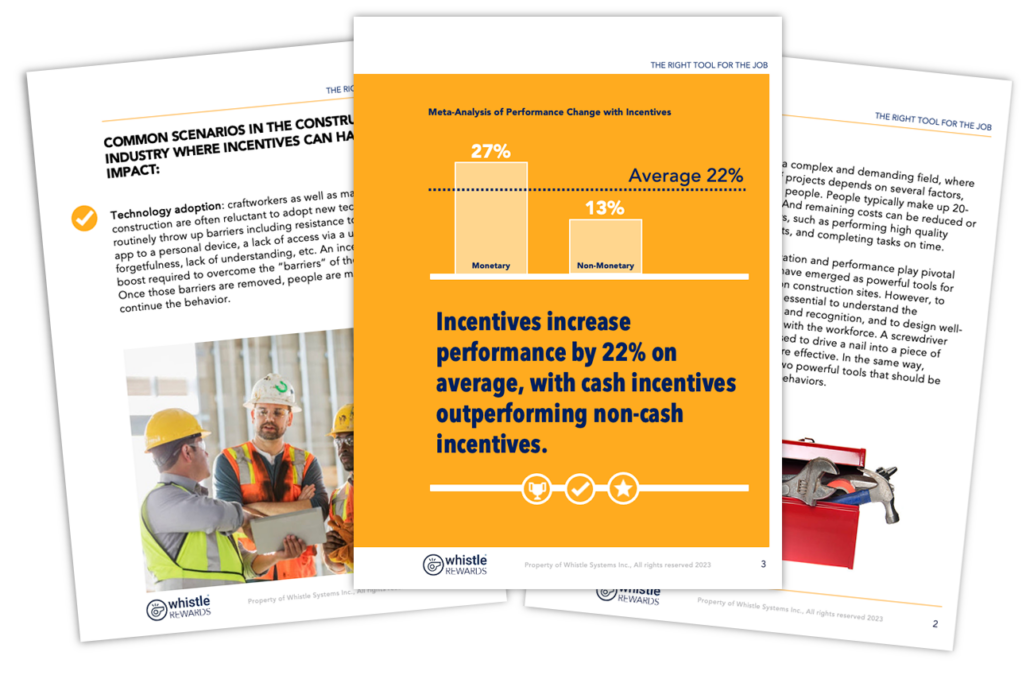INTRODUCTION
The construction industry is a complex and demanding field, where the successful completion of projects depends on several factors, the majority of which involve people. People typically make up 20-40% of direct project costs(1). And remaining costs can be reduced or inflated by people’s behaviors, such as performing high quality work, reducing safety incidents, and completing tasks on time.
In such an environment, motivation and performance play pivotal roles. Incentives and rewards have emerged as powerful tools for promoting high performance on construction sites. However, to harness their full potential, it is essential to understand the differences between incentives and recognition, and to design well-crafted programs that resonate with the workforce. A screwdriver and a hammer could both be used to drive a nail into a piece of wood, but one will be much more effective. In the same way, incentives and recognition are two powerful tools that should be used to drive different kinds of behaviors.
INCENTIVES. DO THIS, GET THAT.
Incentives are proactive motivators that encourage individuals to put in extra effort or to meet specific performance targets by promising a tangible reward. They are often based on a “carrot and stick” approach or a “do this, get that” model. Construction workers might be offered cash bonuses, additional time off, or promotions if they achieve certain goals.
Incentives have a clear and immediate focus on achieving specific behavior-based outcomes. They provide a direct correlation between effort and reward, making them particularly effective in driving attention and effort towards particular behavior, and usually for a limited time.
A meta-analysis of 64 different studies on incentives found that incentives increased performance by 22% on average2, with cash incentives the most impactful. The focus of incentives is most often to increase individual productivity, though incentives can be used to improve task quality, innovation, or teamwork.










